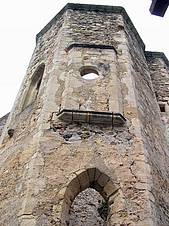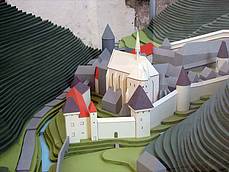Žička kartuzija

 Spomeniško zavarovan kompleks Žičke kartuzije je opredeljen kot ožje območje zgornjega kartuzijanskega samostana v Starih Slemenah, dolina sv. Janeza Krstnika s samostanskimi ribniki in kompleks spodnjega samostana v Špitaliču pri Slovenskih Konjicah. Lastnik spomeniško zavarovanega kompleksa je občina Slovenske Konjice, ki si ga skupaj s strokovnjaki spomeniškovarstvene stroke Zavoda za varstvo kulturne dediščine, Območne enote Celje, in zunanjimi sodelavci že vrsto let prizadeva na eni strani ohranjati, restavrirati in promovirati, na drugi strani pa tržiti. Spomeniško zavarovan kompleks Žičke kartuzije je opredeljen kot ožje območje zgornjega kartuzijanskega samostana v Starih Slemenah, dolina sv. Janeza Krstnika s samostanskimi ribniki in kompleks spodnjega samostana v Špitaliču pri Slovenskih Konjicah. Lastnik spomeniško zavarovanega kompleksa je občina Slovenske Konjice, ki si ga skupaj s strokovnjaki spomeniškovarstvene stroke Zavoda za varstvo kulturne dediščine, Območne enote Celje, in zunanjimi sodelavci že vrsto let prizadeva na eni strani ohranjati, restavrirati in promovirati, na drugi strani pa tržiti.
Vrednota samostanskega kompleksa pa ni samo v njegovem dolgoletnem stavbnem razvoju, neokrnjeni naravi in odmaknjenosti od utripa sedanjega časa, ampak tudi v prepoznavanju vplivov romanskega prostora na razvoj naselbin kartuzijanskega reda v nemških in slovanskih deželah, saj je Žička kartuzija prva kartuzija izven tega kulturnega prostora. Pripadniki kartuzijanskega reda so z gradnjo sakralnih in gospodarskih objektov ustvarili možnost pridobivanja somišljenikov, kar je pomenilo vzdrževanje njihovega načina življenja, hkrati pa možnost mešanja različnih kultur.
 Zgodovinski razvoj stavbnega fonda samostanskega kompleksa sega v začetek 12.stoletja, ko je štajerski mejni grof Otokar III. Traugauski zagotovil kartuzijanski skupnosti bogato donacijo za njeno gospodarsko neodvisnost in s tem posledično njen šestoletni razvoj v ozki dolini pod strmimi pobočji Konjiške gore. Zgodovinski razvoj stavbnega fonda samostanskega kompleksa sega v začetek 12.stoletja, ko je štajerski mejni grof Otokar III. Traugauski zagotovil kartuzijanski skupnosti bogato donacijo za njeno gospodarsko neodvisnost in s tem posledično njen šestoletni razvoj v ozki dolini pod strmimi pobočji Konjiške gore.
Red se je razvijal v obdobju romanike in gotike, v času reformacije zamrl, v baroku ponovno vzcvetel in bil leta 1782 s strani cesarja Jožefa II. ukinjen. Ukinitev reda je pomenila tudi poseganje v strešno konstrukcijo osrednjega sakralnega objekta, to je cerkve sv. Janeza Krstnika v zgornjem samostanskem kompleksu. Odstranitev strehe je povzročila na objektu njegovo hitro propadnje, ki je še toliko bolj intenzivna v humidnih klimi, značilni za ta del Slovenije. Z leti se je porazgubila tudi bogata kartuzijanska oprema, odnešeni so bili tudi različni kamniti arhitekturni členi.
Carthusian Monastery at Žiče
 The monumentally secured complex of the Žiče Carthusian Monastery includes the narrow area of the upper Carthusian monastery in Stare Slemene, the valley of St. John the Baptist together with the monastery fish ponds and the lower monastic complex in Špitalič near Slovenske Konjice. The monumentally secured complex is owned by the Slovenske Konjice community which has been trying to preserve, renovate and promote it on one hand and trade it on the other together with the conservation-preservation experts of Zavod za varstvo kulturne dediščine, the regional unit Celje, and outside co-workers. The monumentally secured complex of the Žiče Carthusian Monastery includes the narrow area of the upper Carthusian monastery in Stare Slemene, the valley of St. John the Baptist together with the monastery fish ponds and the lower monastic complex in Špitalič near Slovenske Konjice. The monumentally secured complex is owned by the Slovenske Konjice community which has been trying to preserve, renovate and promote it on one hand and trade it on the other together with the conservation-preservation experts of Zavod za varstvo kulturne dediščine, the regional unit Celje, and outside co-workers.
However, the value of the monastic complex lies not only in its lasting architectural development, the intact nature and its position far away from the madding crowd, but also in the recognition of Romanic effects on the development of the Carthusian settlements in Germanic and Slavic countries as the Žiče monastery is the first Carthusian monastery outside that cultural area. By building sacral buildings and outbuildings, the members of the Carthusian order created an opportunity for attracting adherents which later on meant maintaining their way of life and at the same time the possibility of mixing different cultures.
 The architectural development of the monastic complex dates back to the beginning of 12th century when the Styrian border count Otokar III of Traugau ensured the Carthusian community a rich donation for its economic independence and consecutively its six-hundred-year development in the narrow valley under the steep slopes of Konjiška gora. The architectural development of the monastic complex dates back to the beginning of 12th century when the Styrian border count Otokar III of Traugau ensured the Carthusian community a rich donation for its economic independence and consecutively its six-hundred-year development in the narrow valley under the steep slopes of Konjiška gora.
The order developed in the Romantic and Gothic period. In the time of Reformation it died away only to bloom again in the Baroque period. In 1782, it was abolished by emperor Franc Jožef II.
The abolition of the order also brought the interference with the roof construction of the central sacral building, i.e. the church of St John the Baptist in the upper monastic complex. The removal of the roof caused a fast decay of the building which has been intensified by the moist climate, typical of this part of Slovenia. In years the rich Carthusian furniture and other elements were lost as well as different stone architecture elements.


Last update: 11:09 10/08 2006
| 



